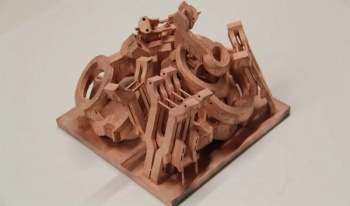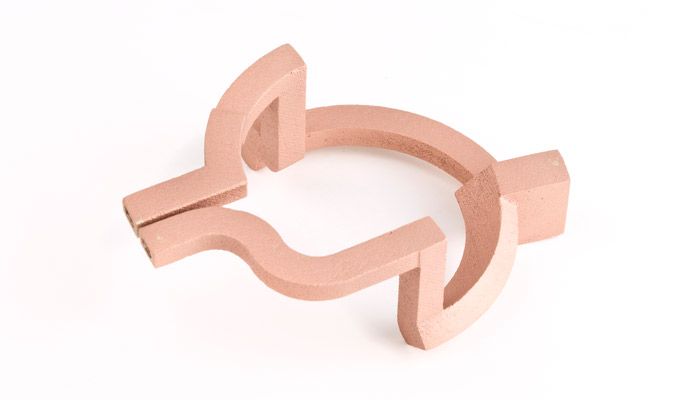
GH Induction has announced the creation of the largest 3D printed coil made of pure copper, made using electron beam melting (EBM). This is a key component used in electromagnetic induction technology to heat metal parts as efficiently as possible. The company actually launched its 3D Inductors brand in 2014, which involves 3D printing these coils, directly from pure copper. The use of additive manufacturing was clear for the company as it offers many advantages such as a reduction in production costs per part created or a longer life span of the coil. In any case, GH Induction has succeeded in designing a larger coil by optimizing the printing volume – this has been increased to 180 x 180 x 350 mm.
Traditionally, coils are manufactured by hand, by brazing or soldering. They are a critical element in induction since they allow the heating process to be activated in a fast, safe and controlled way, while optimizing energy efficiency. In terms of applications, the technology is mainly used to heat treat metals or assemble components in all industrial sectors. 3D Inductors manufactures these famous coils using 3D printing, more specifically via an EBM machine developed by GE Additive.

One of the coil’s 3D printed elements (photo credits: GH Induction)
Since its inception, the company has taken advantage of a 180 x 180 x 180 mm printing plate to manufacture its copper coils. Recently, however, the company rethought the arrangement of the various components in a single coil to increase the production volume. As a result, it was able to take advantage of a larger size – 180 x 180 x 350 mm – and design the largest 3D printed coil in pure copper. The company says in its press release, “The ability to stack and achieve full optimization of the build volume and the ability to process pure copper are very advantageous because they also generate energy efficiency gains and longer life for the inductor coils.”
The teams then tested the quality of the material, particularly its purity. The residual resistivity ratio (RRR) was used to determine this: the higher the indicator, the denser the material and therefore the absence of internal voids, which guarantees excellent thermal and electrical conductivity. The copper used by GH Induction has obtained a RRR of over 250, while that of ordinary copper is between 5 and 150.

Another 3D printed component for the coil (photo credits: GH Induction)
The use of additive manufacturing would therefore allow for a high quality component, while offering more complex internal and external geometries than conventional coils. If you want to know more about 3D Inductors, click HERE.



